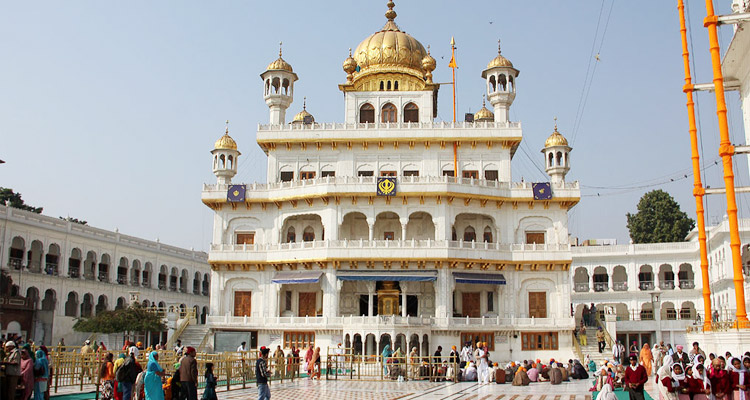
Akal Takht Sahib
AKAL TAKHT : The word ‘Akal’ means, time-less (often used for Almighty-God) Takhat means a throne (seat) where the kings, emperors used to sit. Hence Akal Takhat : the seat of Almighty.
Due to the excavation of the holy pool of nectar (Amrit-Sarovar), a raised place had appeared in front of Harmandir Sahib. As Guru Granth Sahib was installed in Harmandir Sahib in 1604, it was brought to this room for rest every night. Guru Arjan Dev used to rest under the cot meant for Guru Granth Sahib. This room now a days is, known as Kotha Sahib.
AKAL TAKHAT, The highest temporal seat of Sikhism was founded by the Sixth Sikh master Guru Har Gobind Sahib Ji in the year 1609, assisted by Baba Budha Ji and Bhai Gurdas. Guru named it Akal Takhat (The throne of Almighty). Guru Hargobind Sahib used to hold his court, listened to the woes of needy. Guru wore two swords of Miri and Piri at this place, the worldly emperor robe with plume on the turban, ordered the Sikhs to bring weapons, horses as offering and be saint and soldier as well. The tradition of singing ballads of war heroes with stringed instrument (Sarangi and Dhad) began at this place.
Akal Takhat has its own traditions i.e. the priest will recite the evening prayer (Rehras Sahib) and Ardas, with a naked sword in the hand. Some rare weapons pertaining to the Sikh Gurus and Sikh warriors are displayed during the day in Golden Palanquin and explained to the visitors every evening.
It is the most supreme of all the Takhats. There are four other takhats established by the panth (community) during the last century:
- Keshgarh Sahib (Anandpur)
- Patna Sahib
- Hazur Sahib
- Damdama Sahib
The Jathedar of the Akal Takhat is the highest spokesperson of the Sikh Panth and is meant to be a spiritual leader without control or influence from any outside, politically motivated sources.